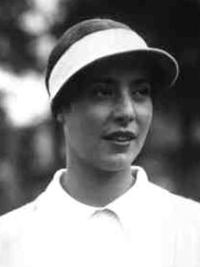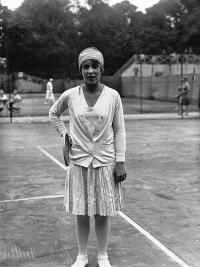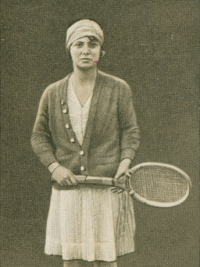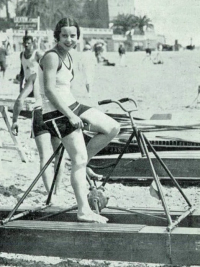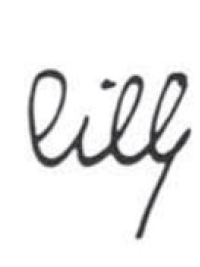Cilly Aussem
Alias: Cäcilia Edith Aussem
Countess F.M. Della Corte Brae
Cäcilie Editha Murari dalla Corte Brà
| Born |
Subscribe now
This information and data is not available because you are not our subscriber yet.
Please click here and get full access to the entire database! |
|---|---|
| Died | |
| Plays | |
| Bio | Cilly Aussem was the first German to win the women's singles title at Wimbledon in 1931. She also won the women's single titles at the French Championships and German Championships in 1931. Aussem's coach and mixed doubles partner was Bill Tilden. They won the mixed doubles title at the 1930 French Championships. According to A. Wallis Myers of The Daily Telegraph and the Daily Mail, Aussem was ranked in the world top ten in 1928, 1930, 1931, and 1934, reaching a career high of World No. 2 in those rankings in 1930 and 1931 behind Helen Wills Moody. Aussem was born in Cologne on January 4, 1909, the daughter of a wealthy salesman Johann Joseph 'Jean' Aussem and Ulrike Franziska 'Helen' Wisbaum. At the age of fourteen, she returned to Cologne after spending several years in Geneva getting a boarding school education. It was at this time that she started taking tennis lessons at the local club KTHC Stadion Rot-Weiss, driven by her mother, who was the first to notice her talent. She contacted Roman Najuch, the reigning world professional champion. Najuch referred Aussem to Willy Hanneman, a tennis coach from Cologne. Hannemann taught Aussem a great sliced backhand, a precisely placed serve, and an effective drop shot. In 1925 she won the junior singles title at the German Championships in Erfurt and was ranked nr.6 nationally. Aussem won the German Championships for the first time in 1926, when she was 17 years old. In Hamburg she defeated Ilse Friedleben in the final in straight sets. But Aussem, who was described as a graceful, small, and psychologically sensitive girl, seemed incapable of withstanding the mental and physical pressures of competitive sports. Usually, the family traveled to exclusive places all over Europe. During the family's summer vacation at the French Riviera, Aussem's ambitious mother asked the world's best player, Bill Tilden, for advice. After having a look at small, shy, Cilly he replied: "My dear lady, Cilly will become a great champion, if you take her home. Take the next train to Germany!" Tilden became Aussem's coach and made her a world class player. Aussem's trademark became her powerful flat forehand. Newspaper articles said that Aussem had a great sliced backhand and effective drop shots. But her biggest qualities were her precision, athletic conditioning, and fighting spirit. In 1928 Aussem's mother claimed that Paula von Reznicek had twice beaten her daughter by using hypnotism, which led to a lawsuit in which Von Reznicek filled charges of 'defamation of character' and Aussem's mother charged her with 'insulting assault'. Aussem suffered from eye inflammation throughout 1929 but in 1930 she had her breakthrough. With Tilden, she won all the mixed double titles on the Riviera that season. At the French Championships, Aussem and Tilden defeated the world's top two mixed doubles teams, Elizabeth Ryan / Jean Borotra and Eileen Bennett Whittingstall / Henri Cochet, and took the French title. Aussem also reached a singles semifinal, where she lost to Helen Jacobs. At Wimbledon, Aussem won against Jacobs in the quarterfinal and faced Ryan in a semifinal. The match ended unexpectedly. While running, Aussem tumbled, fell, twisted her ankle and lost consciousness. After that incident, health problems hampered the remainder of Aussem's tennis career. Her eyes became more and more sensitive, so that she had to spend hours in a darkened room waiting for her matches to start. But Aussem's best tennis result was still to come. At the end of 1930, three years after starting to play in international championships, she reached second place in the world rankings. 1931 was Aussem's most successful year. She won the French Championships, defeating Betty Nuthall Shoemaker of the United Kingdom, and the German Championships. Aussem also won the Wimbledon singles championship, defeating her compatriot Hilde Krahwinkel 6–2, 7–5. She became the first German woman to do so. Aussem again was ranked World No. 2 behind Helen Wills Moody. An English newspaper described Aussem as follows: "There is a Paavo Nurmi of tennis from Germany, a beautiful young girl. Her quickness and her fighting spirit are singular!" All seemed to be prepared for a great international career when something happened that stopped Aussem's rapid rise. Celebrating the successful year of 1931, Aussem and her friend and teammate, Irmgard Rost, decided to travel to Argentina, Brazil and Chile. Aussem won some tournaments there but also caught a serious liver inflammation. Back in Germany, she underwent surgery from which she recovered only very slowly. During the two years she was not allowed to participate in sports, she dreamed about a comeback. In 1933, Aussem returned to the courts but was not able to regain her form. In 1934, she again reached ninth place in the worldwide rankings but started losing to players she had always beaten. She lost at Wimbledon to Helen Jacobs in a quarterfinal and decided to quit the tour at the young age of 25. During her winter holidays in Garmisch-Partenkirchen in 1935, Aussem met her Italian husband-to-be, Earl Fermo Murari dalla Corte Brà. The wedding took place in Munich on 11 March 1936 and the pair moved to Mombasa, Kenya. During her stay there she contracted malaria. Aussem spent the last two decades of her life mainly in her husband's castle in Portofino. Very rarely did people notice her as a discrete spectator at tennis tournaments. In 1963, she underwent another liver surgery, a late consequence of that trip to South America three decades before. Aussem did not recover. She died on March 22, 1963, at the age of 54. German tennis player and writer Roderich Menzel wrote: "Everywhere where she swang her racket and warmed the spectators hearts with her magic smile, she unknowingly inspired young girls to play tennis the way she did. If we remember her today, we feel deep love in our hearts. And we confess proudly: She was our mistress of tennis." Since 1965 the Junior Championships of the German Tennis Association are held under the name "Grosse Cilly Aussem Spiele". |
| Misc | Subscribe now |
| Tournament | AO | RG | W | US | Win-Loss |
|---|---|---|---|---|---|
|
Subscribe now
This information and data is not available because you are not our subscriber yet.
Please click here and get full access to the entire database! |
|||||
